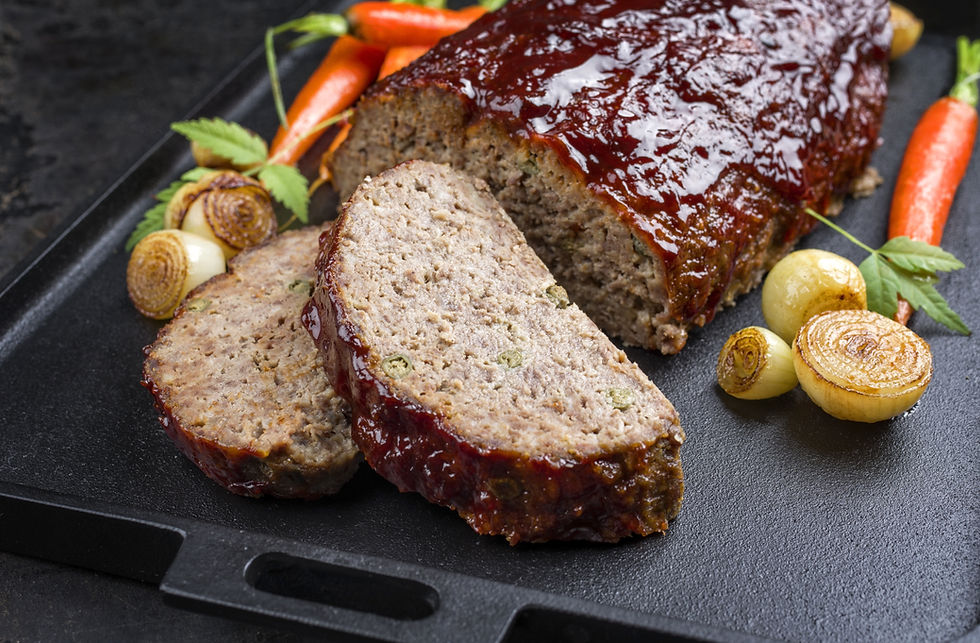A Guide to Meat and How to Cook Them Perfectly
- nutriplanuzh
- Oct 29, 2024
- 3 min read
Cooking meat can be daunting, but understanding the characteristics of each type and following some basic rules can yield tender, juicy results. Here’s an overview of popular meats, along with tips for preparation and cooking.
Chicken
Overview: Chicken is a lean, versatile meat that cooks relatively quickly, but can easily dry out if overcooked.
Best Cuts: Breasts (lean), thighs (juicy and flavorful), wings (ideal for frying), and whole chicken.
Cooking Tips:
Breasts: Best grilled, pan-seared, or baked. Cook to an internal temperature of 165°F (74°C) and avoid overcooking to prevent drying out.
Thighs: Thighs are forgiving and can handle longer cooking. Try braising, grilling, or roasting for added flavor.
Whole Chicken: Roast or slow-cook for even cooking. Tuck the wings under the bird to keep them moist and avoid burning.

Beef
Overview: Beef offers a variety of cuts with different textures and flavors, from tender steaks to flavorful roasts.
Best Cuts: Ribeye (rich and marbled), sirloin (lean), brisket (best slow-cooked), and ground beef.
Cooking Tips:
Steaks (like ribeye and sirloin): Cook over high heat (grill or pan-sear) to desired doneness—medium-rare to medium preserves juiciness.
Brisket: Low and slow is best, either smoked or braised, until tender and flavorful. Aim for an internal temperature of 190-200°F (88-93°C).
Ground Beef: Sear until browned, making sure to cook thoroughly (to 160°F/71°C) if used in burgers.

Pork
Overview: Pork is versatile and offers lean options like tenderloin and more marbled cuts like pork shoulder.
Best Cuts: Pork chops (quick cooking), tenderloin (lean and tender), shoulder (ideal for slow cooking), and ribs.
Cooking Tips:
Pork Chops: Pan-sear or grill over medium-high heat. Avoid overcooking, aiming for a slightly pink center at 145°F (63°C).
Tenderloin: Roast or grill to an internal temperature of 145°F (63°C) for a juicy, tender result.
Shoulder/Ribs: Cook slowly for tender, fall-apart texture. Try braising or slow cooking for pulled pork, or baking ribs low and slow with BBQ sauce.

Lamb
Overview: Lamb has a rich, slightly gamey flavor. Common cuts include lamb chops, leg, and shoulder.
Best Cuts: Chops (quick cooking), leg (great for roasting), and shoulder (ideal for slow cooking).
Cooking Tips:
Lamb Chops: Sear or grill quickly to medium-rare (about 145°F/63°C) for the best flavor and texture.
Leg of Lamb: Roast in the oven with herbs and garlic, aiming for medium-rare to medium doneness (135-145°F/57-63°C).
Shoulder: Braise or roast slowly until tender, as it’s a tougher cut it benefits from slow cooking.

Turkey
Overview: Often associated with holiday meals, turkey can be lean and is best when cooked with added moisture.
Best Cuts: Whole turkey, breast (lean), and drumsticks (more flavor).
Cooking Tips:
Whole Turkey: Brining helps keep it moist. Roast at a low temperature until the breast reaches 165°F (74°C).
Breast: Roasting or grilling works well; monitor closely to avoid drying out.
Drumsticks: Braise or roast, as they are flavorful and can handle a longer cook time.

Duck
Overview: Duck has a rich, dark meat flavor and a layer of fat, especially around the breast.
Best Cuts: Duck breast (rich flavor), whole duck, and legs (best for confit).
Cooking Tips:
Duck Breast: Score the fat, then pan-sear to render out the fat. Cook to medium-rare (135°F/57°C) for the best texture.
Whole Duck: Roast, frequently basting with its fat for a crispy skin.
Duck Legs: Best for slow-cooking (like confit), which yields tender, flavorful meat.

Goat
Overview: Goat meat is lean and slightly gamey, popular in Caribbean, Middle Eastern, and South Asian cuisines.
Best Cuts: Shoulder and shank (tougher cuts, best slow-cooked), ribs, and ground goat.
Cooking Tips:
Stews and Curries: Goat shines in slow-cooked dishes. Braise until tender to bring out the rich flavor.
Grilled or Roasted: If using tender cuts, marinate well and cook quickly over high heat.

Veal
Overview: Veal, or young beef, has a tender texture and mild flavor, often used in delicate dishes.
Best Cuts: Veal cutlets, shanks (great for slow-cooking), and loin chops.
Cooking Tips:
Veal Cutlets: Pan-fry or sauté lightly with a quick sauce to maintain tenderness.
Veal Shank (Osso Buco): Braise slowly for tender, fall-off-the-bone meat.
General Tips for Cooking Meat
Seasoning: Salt and pepper are essential for bringing out the meat’s natural flavors. Herbs and spices complement specific meats—rosemary for lamb, sage for turkey, etc.
Resting Time: After cooking, let meat rest for a few minutes. This redistributes juices, making the meat juicier.
Internal Temperature: Use a meat thermometer to avoid overcooking. Each type of meat has ideal temperatures for safety and doneness.
Slow Cooking: For tougher cuts (like brisket, pork shoulder, or lamb shank), slow cooking or braising breaks down collagen, resulting in tender meat.

Conclusion
With these simple tips and an understanding of the characteristics of each type of meat, you’ll be able to create flavorful, well-prepared dishes. Happy cooking!

Yorumlar